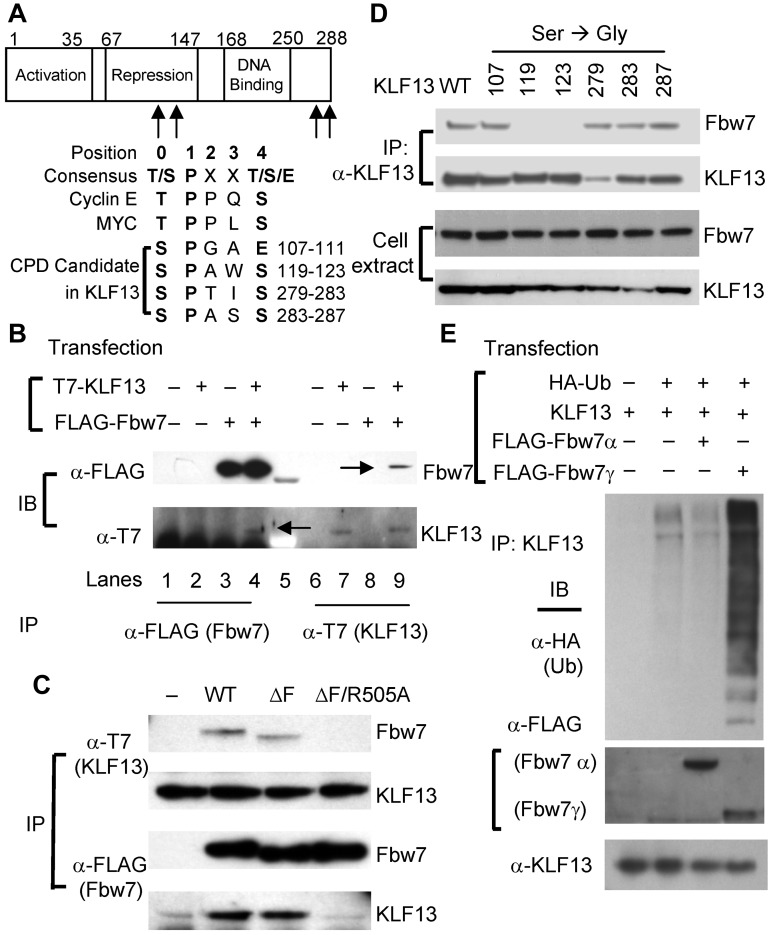Figure 3.
Fbw7 interacts with KLF13 and catalyzes its ubiquitination. (A) CPD candidate sequences in KLF13 are compared with CPD consensus sequences and CPD sequences in cyclin E and Myc. (B) HEK293T cells were transiently transfected with plasmids that express T7-tagged KLF13 and/or FLAG-tagged Fbw7. Cell lysates were immunoprecipitated (IP) with anti-T7 Ab or anti-FLAG Ab and analyzed by Western blot analysis. Co-IP bands are marked by arrows in lanes 4 and 9. (C) HEK293T cells were transiently transfected with plasmids that express T7-tagged KLF13 and/or WT and mutated forms (ΔF and ΔF/R505A) of FLAG-tagged Fbw7. Whole-cell extracts were IP and analyzed by immunoblot (IB). (D) HEK293T cells were transiently transfected with plasmids expressing KLF13 (WT or S/G-mutated forms at indicated amino acid residue) and FLAG-tagged Fbw7. Whole-cell extracts were IP by anti-KLF13 Ab and analyzed by IB. (E) HEK293T cells were transiently transfected with plasmids that express KLF13, FLAG-tagged Fbw7 (α or γ) and HA-tagged ubiquitin (Ub). Cell lysates were IP with anti-KLF13 Ab for Western blot analysis with anti-HA Ab. Whole-cell extracts were analyzed by Western blot analysis with anti-FLAG Ab for Fbw7 or anti-KLF13 Ab.

